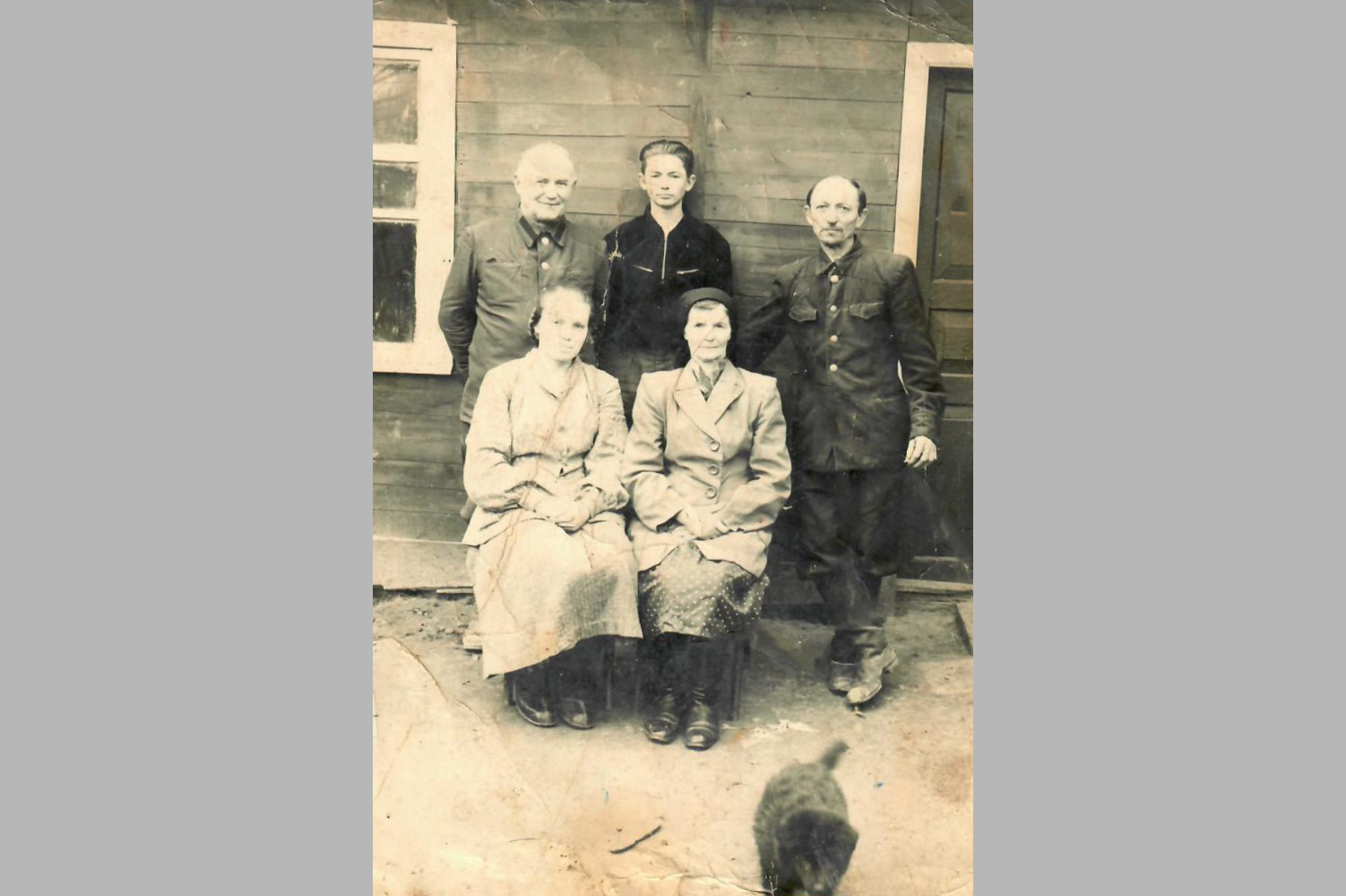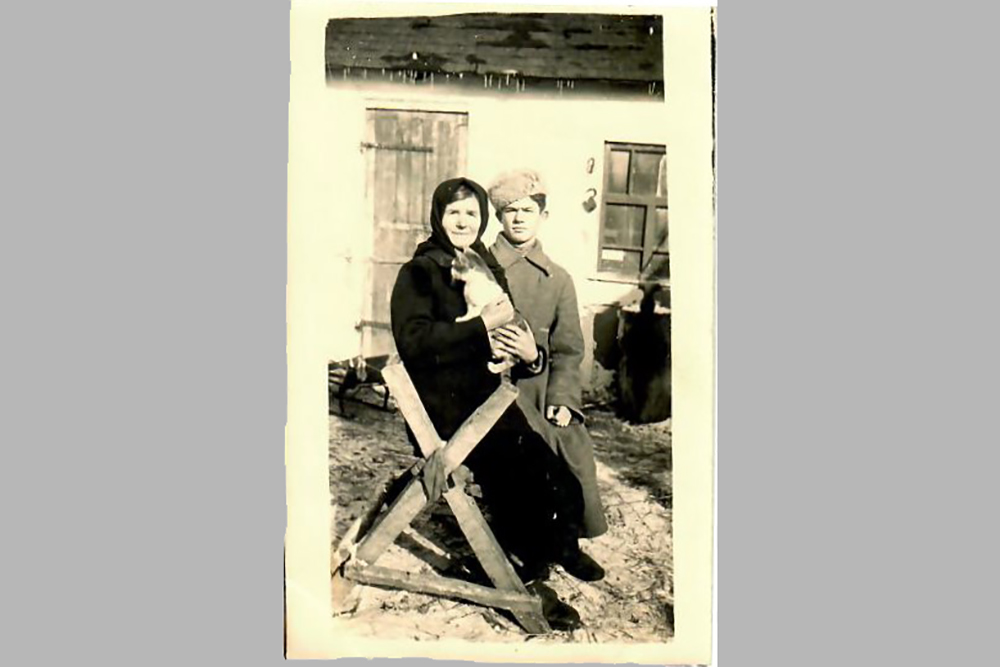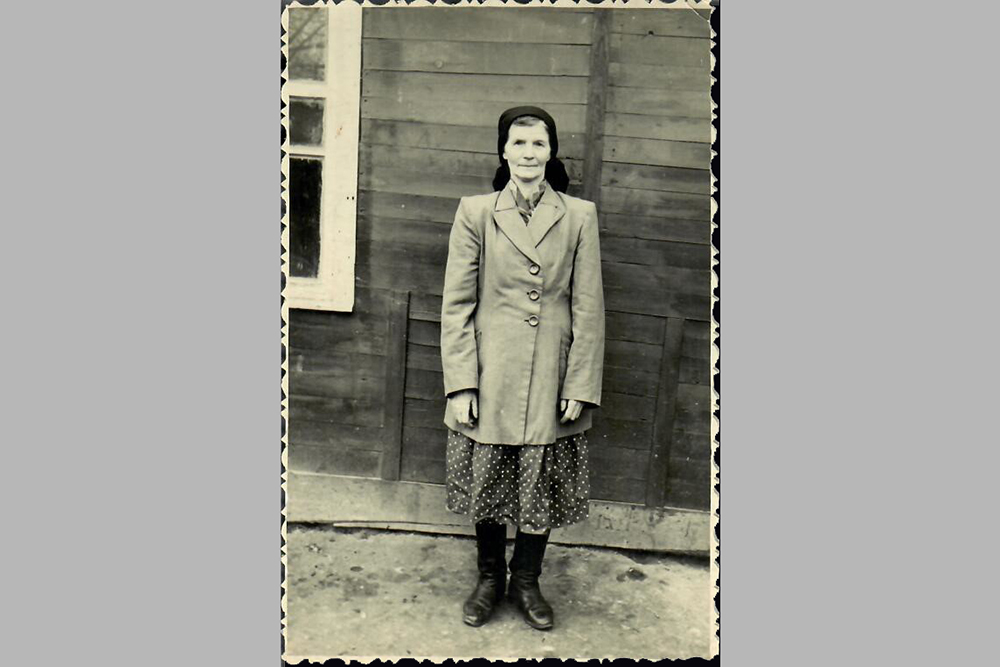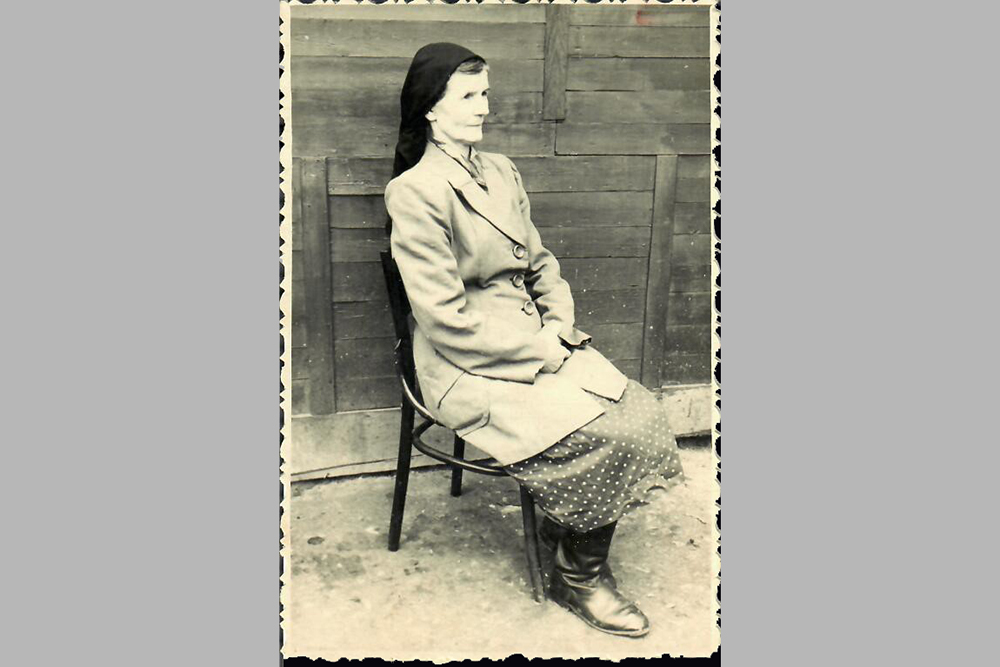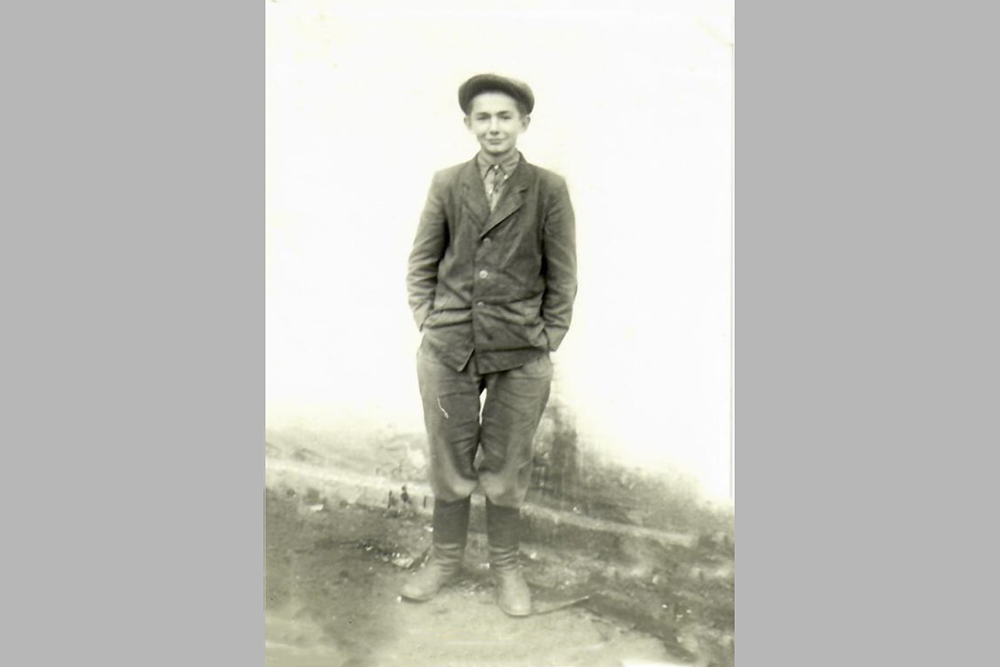Bank of Portraits / Kostiushko Oleksandr, Maria and Petro

Kostiushko Oleksandr, Maria and Petro
Oleksandr and Maria Kostiushko together with their junior son Petro and elder son Yevhen lived in the hamlet of Piatakov-Manuilskyi near the village of Vovchkiv, Kyiv region. The Kostiushko family was known as respectable farmers – they had a large farm and owned a forest area. In 1929, they were dispossessed. All property was confiscated, father was arrested and sent to the Lukianivska Prison in Kyiv, mother with children were kicked out of their home. All that remained with the recently wealthy peasants were a cow and a horse. Thanks to the petitions from the fellow villagers, Oleksandr Kostiushko managed to avoid the death penalty. However, during the following few years, the family had to roam around the neighbors and nearby villages seeking for some temporary jobs. Oleksandr Kostiushko worked as a digger around entire Ukraine and went to work even in Belarus.
In 1933, the culmination of the Holodomor, one more son was born in the Kostiushko family – Volodymyr. In the same year, the tragedy happened in the family – the elder son Yevhen died as a result of the accident in the pond.
Soon, the family found temporary shelter in the city of Bila Tserkva. There they met the local Jewish man, the road master Leonid Horobtsov. He saved the family from the death of hunger by helping them to get a job at the road construction, and supported them with food. Since that time, friendship has appeared between the families.
Maria’s sister lived in Bila Tserkva, that is why the family of Kostiushko moved to her a bit later. They made the dugout near her house and lived with their sons there. Shortly before the war, they received the piece of land (on the territory of the current sports ground of the school No. 3 in Bila Tserkva. Brick after brick, they began to build their own house with two rooms. In the small room they lived by themselves, in the bigger room they had a cow and some hay. At the beginning of the war, they still lived in the uncompleted house with the new family member – newborn son Yevhen.
After the Nazis came to the city in July 1941, the persecutions and mass murders of the Jews started. In August, the decree was introduced, which ordered all the Jews to come to the burgomeister's administration for registration. They had to wear the stars of David on their back and chest. Until the end of August, most of 3,000 Jews who came to the registration were shot dead on the territory of the so-called military grounds No. 3 and 7 in the city suburbs.
“They were gathered on the ‘3rd ground’. They were not kept there for a long time. We looked at how they were formed into the column, surrounded by the soldiers, we were driven to the other side, and they were taken… Suddenly I heard the machine gun shooting… It looks like the prisoners of war buried them… When we got there, the soil was still moving…”. From the memories of Petro Kostiushko
Trying to survive, Leonid Horobtsov came to his Ukrainian friends. However, he did not want to put them under the deadly risk and decided to go to the partisans in the forest. The family of Kostiushko and their relatives Dmytrenko helped Leonid with food and clothes. The husband of Maria Kostiushko’s sister, Volodymyr, who was just released from German captivity, gave his military ID to Leonid, so he was able to hide his Jewish origin.

For a long time, Leonid hid somewhere under the name Volodymyr Dmytrenko. He was arrested several times, but each time he managed to escape and avoid execution. In 1943, he was caught by the Gestapo in Bila Tserkva again. The local guard helped him escape and avoid the death penalty.
“He said to Horobtsov: Volodia, I will form the guard squads now, jump across the fence and run, as the ‘black raven’ arrived. ‘The black raven’ arrived and took them to Kyiv to be shot dead.
Horobtsov did not believe it at the beginning. He thought it was a provocation and they were going to kill him during the escape attempt. But then he dared, jumped across the fence, heard the siren and ran across the gardens – right to our house…”. From the memories of Petro Kostiushko.
Horobtsov asked the Kostiushko family to help him for the second time. As a woman protecting her family, Maria worried and warned her husband that, because of such a guest, they would be shot dead or their house would be burnt. They were afraid of their neighbors, who could report on them, more than the Germans. Oleksandr replied: “What will happen to him, will happen to us. I won’t drive him out”.
Finally, the Ukrainian family harbored the escapee, and, despite the risk, had been hiding him for nearly 5 months. During the day he hid in the cellar or hay. At night, he slept in the house.
Shortly after that, the 15-year-old nephew of Leonid, Hryhorii Miaskovskyi, came to the house of Kostiushko. The Ukrainian family sheltered him as well.
Yet in 1941, Hryhorii managed to escape from the forced labor camp, after which he found his mother and left Bila Tserkva with her. After long hardships, they got to Vasylkiv. Initially, Hryhorii and his mother hid in the abandoned houses and cemeteries, until they were fortunate to meet Paraska Pohorila in March 1942. She was a young widow and mother of three children. A woman had been hiding them in her house for the following 20 months.
To make Paraska’s burden easier, Hryhorii sometimes left his hideout and found temporary jobs in the villages nearby. In October 1943, Hryhorii went to earn some money again and found a job in the neighboring village for a few weeks. There he met Maria’s brother, Volodymyr Dmytrenko, from whom he learned about his uncle Leonid hiding at the house of the Kostiushko family. The boy decided to find his relative, but did not manage to return to Vasylkiv. After the fierce fights in November 1943, the town was recaptured by the Red Army and the front stopped for 2 months.
Hryhorii was deeply worried about his mother, who remained in Vasylkiv. One day he decided to leave his hideout and went searching for her, trying to cross the frontline. But it was unsuccessful. He nearly died and went back to the house of the Kostiushko family, where he waited for the end of occupation with his uncle.
All residents of the house helped to shelter the Jews somehow. Even the youngest family member, 2-year-old Yevhen, took care of the guests. One day he climbed the window sill and saw the warplanes attacking. “Leonia, hide, the flight is flying!”, the baby screamed.
On January 4, 1944, the Red Army eliminated the Nazis from Bila Tserkva. After the war, Leonid and Hryhorii lived in their own houses. Horobtsov continued to work in the construction sphere. Later, he was invited to lead the building of the Park of Glory Memorial Complex in Bila Tserkva. Miaskovskyi and his mother Hanna settled in Kyiv.
The family of Kostiushko lived in the same house where they hid the Jews all their life. After the war, Oleksandr worked as a stocker, and Maria was a housewife.
The father of the family Oleksandr gave a good example of behavior to his sons. Petro and Yevhen became drivers, Volodymyr was the first one from the family who received higher education and was a school teacher of French.
Until the end of their lives, the rescued ones kept very warm and friendly relations to their rescuers.
“Horobtsov was like our relative. Even 10 times better than just a relative. When we lost our father and mother, he became like a father for me…”. From the memories of Petro Kostiushko.
In 1997, Oleksandr and Maria Kostiushko and their elder son Petro were awarded the honorary title “Righteous Among the Nations”. Paraska Pohorila also received the honorary award.

Oksana Kostiushko
Bila Tserkva
-
fingerprintArtefacts
-
theatersVideo
-
subjectLibrary






